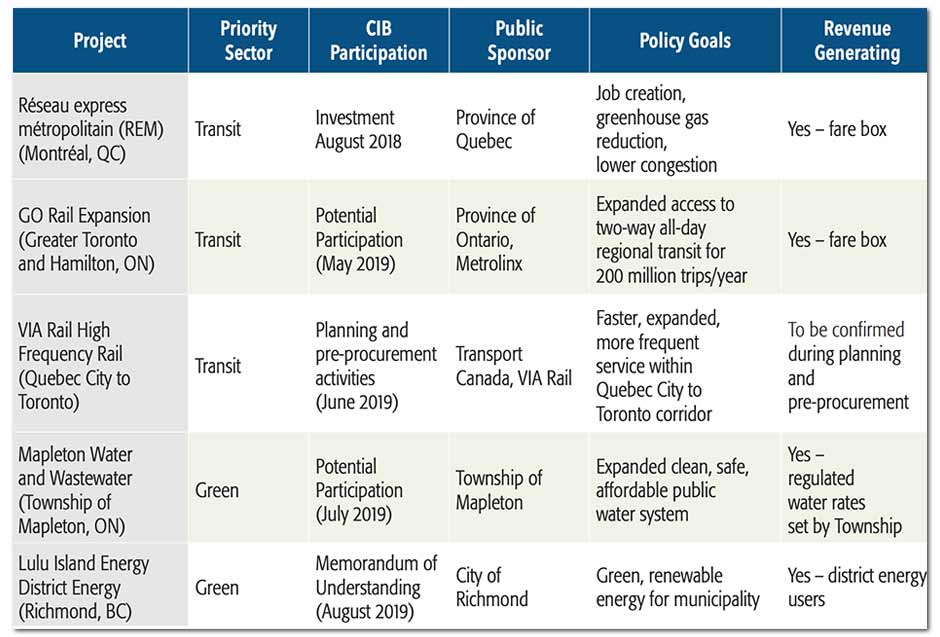
Canada Infrastructure Bank Reveals Key Projects Will Be Funded By Having Canadians Pay Fees to Private Companies
Canada Infrastructure Bank’s new annual report indicates private investors will generate revenues through a ‘fare box’
The Canada Infrastructure Bank has finally revealed how the federal Liberal government plans to fund its infrastructure projects: By forcing working Canadians to pay private companies out of their own pockets.
When the Canada Infrastructure Bank was first unveiled, former Finance Minister Bill Morneau repeatedly dodged questions about whether he was opening the door to Canadians paying user-fees to private companies in order to use public infrastructure.
In a 2016 interview with CTV Question Period, host Evan Solomon repeatedly pressed Morneau to go on the record about whether he would allow the projects to generate revenue by charging user-fees, such as tolls on highways.
“Sometimes you just won’t get an answer,” Morneau finally replied.
https://www.youtube.com/watch?v=S1jOWgAFkMU&feature=emb_title
Morneau’s infrastructure bank was set-up with $35 billion in seed money to attract private investment in infrastructure projects, after a series of meetings with wealthy domestic and foreign investors.
But how the infrastructure bank planned to pay back those investors remained an unanswered question — until earlier this month when the CIB released its 2019-2020 annual report.
The bank appears to lay out how it plans to extract funds to repay its private investors, with a chart detailing how the bank’s 9 projects will be “revenue-generating.”

Canada Infrastructure Bank 2019-2020 Annual Report
CUPE senior research officer Robert Ramsay said CIB’s latest annual report confirms what Morneau wouldn’t say in 2016 — that infrastructure projects will largely be paid for by user-fees that go to private companies.
“The first time this was announced, as a public infrastructure bank it was unclear but then the government unveiled it — the bank was really to play the role of a broker for private sector investment,” Ramsay told PressProgress.
In the case of the Réseau express métropolitain (REM) line in Montreal and the GO Rail Expansion for Greater Toronto and Hamilton, the infrastructure bank states that the projects will generate revenue for private investors through a “fare box.”
In a statement to PressProgress, a spokesperson for the Canada Infrastructure Bank confirmed that projects such as Montreal’s REM line would generate revenues “through payment for a service by users.”
“We are interested in new infrastructure projects that are revenue generating, in the public interest, and commercially structured to attract private sector investment,” the spokesperson explained.
“We do not,” they added, “determine the price users pay when they use a service.”
“They don’t say they’re going to raise fares but how else will this return on investment happen?” Ramsay asked.
“In Montreal, there’s concern that fares will increase but also that the public transit system will be bent to the will of REM,” the CUPE researcher said. “There’s concern that a lot of the system will be re-routed to the REM along with the replacement of the Laval line. There are a lot of ways that user fees are being captured.”
The CIB’sfive-year plan previously committed the bank to:
“Develop mechanisms to engage private sector partners earlier in the project planning and design process to facilitate more commercially focused infrastructure decisions which can better support user-pay funding models or sustainable public investment through revenue generating business model.”
The infrastructure bank’s previous 2018-2019 annual report indicated that it saw great “poteintal” to privatize water management systems “across the country.”
CIB’s new annual report indicates that the bank’s now-collapsed Mapleton wastewater P3 project would be “revenue-generating” through water rates set by the local township.
Our journalism is powered by readers like you.
We’re an award-winning non-profit news organization that covers topics like social and economic inequality, big business and labour, and right-wing extremism.
Help us build so we can bring to light stories that don’t get the attention they deserve from Canada’s big corporate media outlets.
Donate



